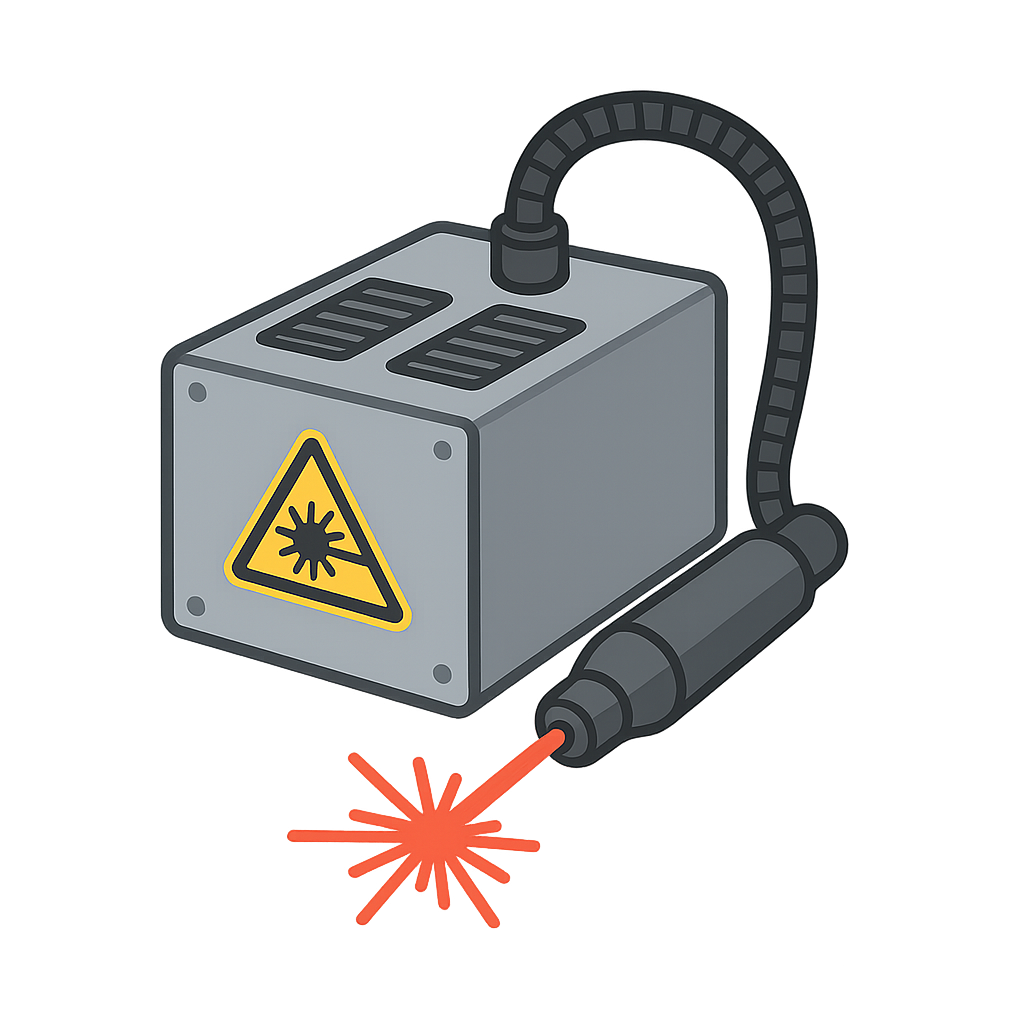I Am a Laser
You see light every day. It spills from the sun, flickers from a candle, and shines from a lightbulb, scattering in a million different directions. But I am not that kind of light. I am a LASER, which stands for Light Amplification by Stimulated Emission of Radiation. Imagine a crowd of people walking randomly through a park. That’s ordinary light. Now, imagine a company of soldiers marching in perfect lockstep, each one moving with the same stride, in the same direction, at the same time. That is me. All my light particles, my photons, travel together as a single, powerful, and focused team. My story, however, didn't begin with a flash of light, but with a flash of genius in the mind of a man named Albert Einstein. Way back in 1917, while the world was a very different place, he published an idea. He theorized that under the right conditions, you could stimulate atoms to release photons that were perfect copies of each other. He called this 'stimulated emission.' It was a revolutionary concept, the seed from which I would eventually grow. For decades, this idea remained just that—an idea on paper, a whisper of a possibility among scientists. They knew it was possible to create a beam of pure, organized light, but no one knew quite how to build the machine that could bring me to life. I was a dream, waiting patiently in the realm of physics for someone to give me form.
My journey from a concept to a reality was a long and collaborative one, built on the shoulders of brilliant thinkers. The first major step happened in the 1950s when my cousin, the MASER, was born. He worked with microwaves instead of visible light, but his creation proved that the principle of stimulated emission was sound. Inspired by this, two scientists, Charles Townes and Arthur Schawlow, wrote a detailed scientific paper in 1958. It was like a recipe book, outlining the exact ingredients and steps needed to create me, a laser that could shine in the visible spectrum. Scientists around the world raced to be the first to follow their instructions. The hero of my birth story, however, was a determined physicist named Theodore Maiman, who worked at Hughes Research Laboratories in California. Many other teams were trying to use gases to create me, but Ted had a different idea. He believed the answer lay within a solid crystal, specifically a synthetic pink ruby. Other experts scoffed, believing a ruby couldn't possibly work. But Ted was persistent. He carefully crafted a small ruby rod, polished its ends to be perfectly parallel mirrors, and wrapped a powerful flash lamp around it, like a coil. The air in his lab on May 16th, 1960, must have felt electric with anticipation. He and his assistant stood back, the machine hummed, and then—FLASH. The lamp fired a brilliant pulse of white light into my ruby heart. For an instant, the atoms inside absorbed the energy, became excited, and then, all at once, they released their photons in a perfect, cascading chain reaction. For the very first time, I burst into existence. I was a pulse of deep red light, perfectly straight, perfectly pure, and incredibly intense. I was no longer just an idea; I was real.
In my earliest days, I was a scientific marvel but also a bit of a puzzle. People would look at me, this pencil-thin beam of pure color, and wonder, 'What is it good for?' I was famously called 'a solution looking for a problem.' But it didn't take long for human ingenuity to find work for me to do. My ability to be perfectly focused made me an ideal tool for countless tasks. Soon, I was lighting up the world in ways no one had imagined. You probably meet me every day without realizing it. When you're at the grocery store, that's me, reading the barcodes on your items with a quick, red flash. If you've ever listened to a CD or watched a DVD, that was me, too, reading the microscopic pits on the shiny disc to bring you music and movies. My most important job might be as a messenger. I am the light that zips through the world's fiber optic cables, carrying your phone calls, videos, and internet data across continents in the blink of an eye. In hospitals, surgeons use my focused energy as a scalpel, performing delicate operations with incredible precision. In factories, my powerful beams cut through thick steel as if it were paper. From a theoretical concept in 1917 to a reality on May 16th, 1960, and now an indispensable part of modern life, my journey has been incredible. My story is a testament to the power of a single, focused idea. And just like the scientists who are always discovering new things I can do, my own story is far from over. I will continue to illuminate the path to the future, one focused beam at a time.
Reading Comprehension Questions
Click to see answer
